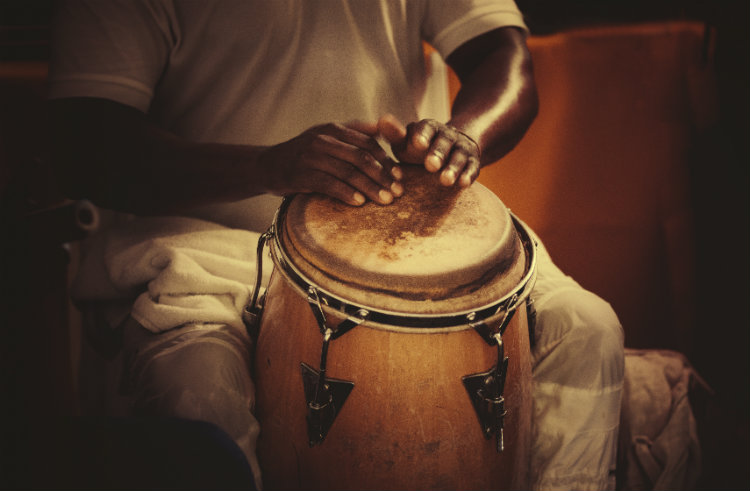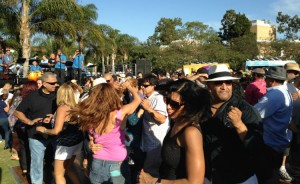The history of salsa is a nebulous beast, and I’m not so sure I can do it justice. But if you’re anything like me, you’ll probably want to understand more about where your new hobby comes from.
So where does salsa come from? To which Latino country do we owe our gratitude as the birthplace of this dance?
If only it were that simple.
Salsa’s Fibrous Root System
Since salsa is a type of ballroom dance, it’s easy to think that its form is strict and prescribed, stemming from told traditions. But in reality, salsa is built on a foundation of evolution and change. As with any type of art, it is open to improvisation, modification, and collaboration within the bounds of its form. And just like a language, salsa and the geographical locations it calls home are mutually influential.
That is to say, salsa influenced local culture just as much as local culture influenced salsa.
Not surprisingly, salsa’s origins are indirect, hard to trace, a mezcla.
According to most sources, the Cuban són is a large piece of salsa’s foundation. The són itself is a mix of African beats and the Spanish troubadour, writes Jamie Andrés Pretell in a brief History of Salsa Dance and Music. But salsa originates from the són mixed with the Danzón, which was brought to Cuba from the French who fled Haiti, and the Rhumbas, which is African and Colombian.
As people from different cultures migrated together, their influence on one another was inevitable. Syncretism, Pretell says, has been key in bringing together the elements that make salsa what it is today. This same fusion seen in Cuba is paralleled in other Latin countries, such as the Dominican Republic, Colombia, Venezuela, and Puerto Rico, and for each country, their own combinations of dance — salsas, if you will — were propagated.
Credit Where Credit is Due
In the conversation about where salsa really comes from, it becomes difficult to dole out credit fairly. Although salsa has strong basis on the Cuban són, others say that this overlooks the Puerto Rican influences and the fact according to many, Puerto Ricans popularized the dance worldwide.
In Paul F. Clifford’s Origins of Salsa, he writes that the influx of Puerto Rican immigrants — almost 1 million in the 40’s, 50’s, and 60’s — coincided with the growth in interest Americans began to take in Latino dance styles.
An interesting side note here — since Puerto Rico is a US protectorate, Puerto Ricans are US citizens. According to Clifford, the freedom of movement this gave to Puerto Ricans at the time was likely also the cause for those who left their homeland to hold on even tighter to defining cultural vehicles, such as music and dance.
Puerto Ricans living in the barrios of New York City, for example, listened to Bomba, an Afro-Caribbean-influenced dance that is uniquely Puerto Rican. They also danced Mambo, and eventually contributed a more romantically-styled version of salsa that borrows features of the Mambo.
So — Puerto Ricans and others of Latino descent who migrated to the US mid-century were confronted with a new culture and new surroundings, which resulted in a reactionary nostalgia for the influences of their heritage. And of course, as these cultural aspects were re-ignited in this new place, they in turn influenced the host country — the US. This lead to the creation of new dance styles, one of which is salsa.
Finishing Touches
So what is the actual birthplace of salsa as we know it today?
Jaime Andrés Pretell writes that salsa was finished — that is, brought into the local market — in New York City. This is where everything came together with American Jazz and big band music to form the type of dance that we see today.
As a widespread American interest in Cuban films and dance brought new rhythm to the United States, the African-American-influenced Jazz movement was already in full swing. Clifford writes that in the 1930’s and 1940’s, Cuba and the US carried on a conversation, “forming parallel Latin Music styles,” as he writes. After the US cut off diplomatic relations with Cuba in the 1960s, the influences became more Puerto Rican, and salsa itself diversified.
“Salsa,” writes Clifford, “is simply a word used to describe a fusion of different rhythms.” It is in actuality an advertising word, one that was used to describe and market Latino music in the US in the 1960’s.
And “salsa” does seem a particularly apt term in that it refers to a combination of many different influences, not least of which are American. In fact, the term itself seems particularly American when you consider the fact that it grew from an attempt to describe so many cultures all at once — influences that not only come from more than one country, but also that are themselves the product syncretism. I hate to use the phrase “melting pot,” but it does seem fitting.
Although it’s hard to go in after the fact and pick apart the different spices, flavors, and components of something that has developed its own unique identity over time, it’s nice to have some context. And as for how salsa has evolved into the different sub-types we see today…well, that’s for another article.
I’ve left a lot out here — for instance, the way that salsa evolved in other countries outside the US, and a more detailed explanation of how Latino cultures besides Cuba and Puerto Rico played a part in salsa’s development. Feel free to let me know what I’ve missed and share your thoughts!


One small clarification: The Hatian connection to “salsa” was not the “French” fleeing from Haiti but Africans fleeing from Haiti during a revolution against the French. African rythyms, combined with musicians trained to play European instruments created the music we know as salsa. The rhythms (often called “clave rhythms”) have been traced back to specific parts of Africa. The son clave (mambo, chachachá, salsa rhythm) is ||: 1**4**7* | **3*5*** :|| This rhythm is something that every man, woman and child in Cuba and Puerto Rico can clap out when they hear salsa. You can teach yourself if you count slowly and clap on the numbers.